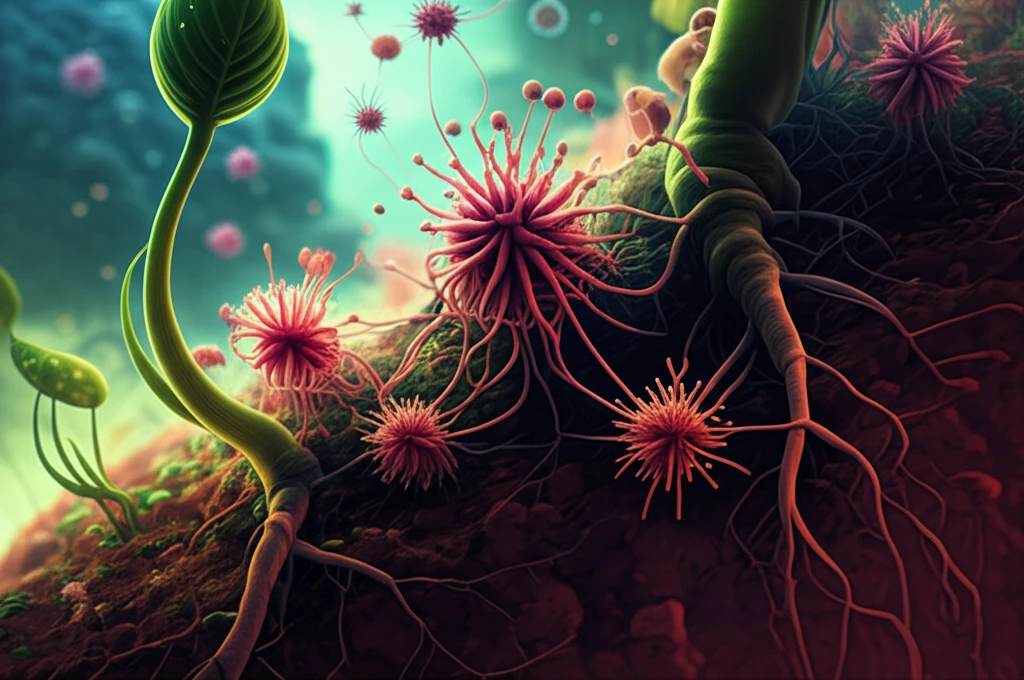
Unlocking Earth's Hidden Secrets: How Siderophores Could Revolutionize Our Understanding of Soil and Ecosystems
"Dive into the groundbreaking research exploring how tiny molecules called siderophores influence the dissolution of iron in soil, with surprising implications for environmental science and agriculture."
Soil, the foundation of terrestrial life, harbors a complex interplay of minerals, organic matter, and microorganisms. Among these interactions, the availability of iron (Fe) plays a crucial role in supporting plant growth and microbial activity. Iron, often bound tightly in insoluble forms, requires ingenious strategies for its acquisition. That's where siderophores come in – tiny, yet mighty, molecules produced by bacteria, fungi, and even plants themselves.
Siderophores act as natural chelators, grabbing onto iron and making it accessible to organisms. They're like microscopic delivery trucks, ferrying iron from the soil to the cells that need it. Understanding how siderophores function is essential for comprehending nutrient cycles, ecosystem dynamics, and even the development of sustainable agricultural practices.
Recent research has focused on the intricate relationships between siderophores, iron oxyhydroxides (a common form of iron in soil), and natural organic matter (OM). These studies explore how organic matter, either coating iron minerals or existing as separate compounds, affects the ability of siderophores to dissolve iron and make it available. The findings could reshape our understanding of soil health and offer new approaches for managing ecosystems.
What Are Siderophores and Why Do They Matter?

Siderophores are small, high-affinity iron-chelating compounds secreted by microorganisms and plants. Their primary function is to scavenge iron from the environment, solubilize it, and transport it into the cell. Iron is essential for various biological processes, including respiration, DNA synthesis, and enzyme activity. However, in many environments, iron is present in insoluble forms, making it difficult for organisms to acquire.
- Structure and Affinity: Different siderophores have varying affinities for iron, depending on their chemical structure. Some siderophores are highly specific for Fe(III), while others can bind to other metals as well.
- Environmental Conditions: pH, temperature, and the presence of other ions can influence the stability and effectiveness of siderophore-iron complexes. For example, acidic conditions can enhance the dissolution of iron, while high concentrations of competing metals can reduce siderophore activity.
- Microbial Interactions: Siderophores can also mediate interactions between different microbial species. Some bacteria produce siderophores that can be utilized by other bacteria, while others have mechanisms to prevent siderophore piracy.
The Future of Siderophore Research: Implications and Applications
Understanding the role of siderophores in soil ecosystems opens doors to various applications. In agriculture, siderophores could be harnessed to enhance nutrient uptake by plants, particularly in iron-deficient soils. This could lead to reduced reliance on synthetic fertilizers and more sustainable farming practices. In environmental remediation, siderophores could be used to mobilize and remove heavy metals from contaminated soils. Further research is needed to fully understand the complex interactions between siderophores, organic matter, and soil minerals, but the potential benefits are immense. By unlocking the secrets of these tiny molecules, we can gain a deeper understanding of our planet and develop innovative solutions for a sustainable future.
